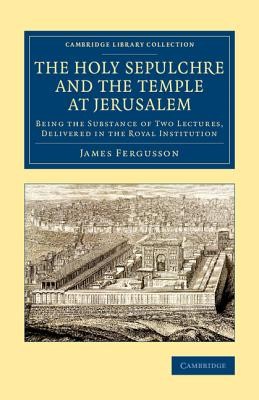
- We will send in 10–14 business days.
- Author: James Fergusson
- Publisher: Cambridge University Press
- ISBN-10: 1108080634
- ISBN-13: 9781108080637
- Format: 14 x 21.6 x 1 cm, minkšti viršeliai
- Language: English
- SAVE -10% with code: EXTRA
Reviews
Description
Born in Scotland, James Fergusson (1808-86) spent ten years as an indigo planter in India before embarking upon a second career as an architectural historian. Despite his lack of formal training, he became an expert in the field of Indian architecture. The topography and temples of ancient Jerusalem also fascinated him. This 1865 collection of two lectures summarises his controversial topographical and architectural argument that the location where Constantine erected the original Holy Sepulchre was the Dome of the Rock on the Temple Mount. Fergusson then describes the Temple in its successive forms, arguing against the view that the rock known as the foundation stone was the site of the Jewish altar. The work is illustrated throughout with plans and drawings. Fergusson's Cave Temples of India (1880) and the two-volume revised edition of his History of Indian and Eastern Architecture (1910) are also reissued in the Cambridge Library Collection.
EXTRA 10 % discount with code: EXTRA
The promotion ends in 23d.12:15:11
The discount code is valid when purchasing from 10 €. Discounts do not stack.
- Author: James Fergusson
- Publisher: Cambridge University Press
- ISBN-10: 1108080634
- ISBN-13: 9781108080637
- Format: 14 x 21.6 x 1 cm, minkšti viršeliai
- Language: English English
Born in Scotland, James Fergusson (1808-86) spent ten years as an indigo planter in India before embarking upon a second career as an architectural historian. Despite his lack of formal training, he became an expert in the field of Indian architecture. The topography and temples of ancient Jerusalem also fascinated him. This 1865 collection of two lectures summarises his controversial topographical and architectural argument that the location where Constantine erected the original Holy Sepulchre was the Dome of the Rock on the Temple Mount. Fergusson then describes the Temple in its successive forms, arguing against the view that the rock known as the foundation stone was the site of the Jewish altar. The work is illustrated throughout with plans and drawings. Fergusson's Cave Temples of India (1880) and the two-volume revised edition of his History of Indian and Eastern Architecture (1910) are also reissued in the Cambridge Library Collection.


Reviews